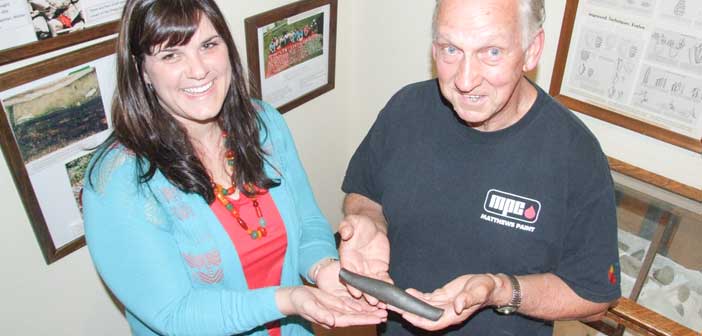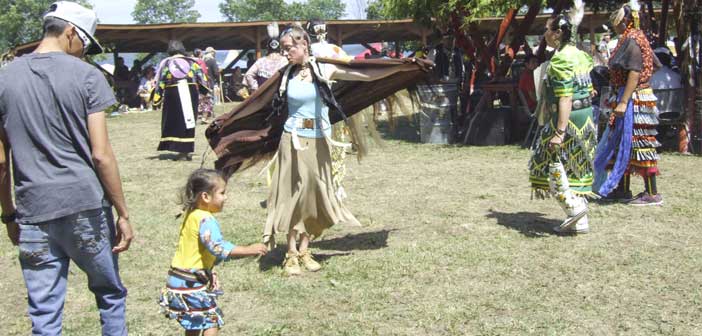SHEGUIANDAH—It was pretty much a fluke that Pierson Ferguson spotted the long black piece of stone turned up by his plow as he worked the land on his farm over 60 years ago. “It looks almost like a piece of wood,” noted his son Jack Ferguson as he donated the over 2,000-year-old artifact to the Centennial Museum of Sheguiandah.
“My dad picked it up and realized that it was actually made out of stone,” he said. “Over the years we all tried to figure out what it was, but it eventually wound up sort of tucked away in a cupboard.”
The long inch-thick piece of black striped stone, less than a foot in length, defied the best guesses of friends, family and visitors over the years. “We would take it out for visitors to try and figure it out,” said Mr. Ferguson. “Nobody really had a clue.”
The worked stone is obviously man-made, smoothed and worked into a distinctive, yet mysterious, shape. Guesses ranged from some sort of handle to possibly some sort of atlatl (throwing stick) weight.
“I heard about Pat Julig and that he worked at Laurentian University with stuff like this,” said Mr. Ferguson. “He took a look at it and did some research.”
[pullquote]“I heard about Pat Julig and that he worked at Laurentian University with stuff like this,” said Mr. Ferguson. “He took a look at it and did some research.”[/pullquote]
Dr. Julig finally found the answer in a book on ancient woodland artifacts. Made from a stone usually worked into the distinctive ceremonial breastplates of the early inhabitants of the region from stone harvested from deposits in the LaCloche Mountains, the black worked stone likely functioned as a protective amulet.
“It is a bar amulet,” said Dr. Julig, “probably from the Meadowland Culture, from between 2,000 and 2,500 years ago.”
The stone was worked by hand, ground into its distinctive shape through many laborious hours of determined grinding by a person who had never even imagined, let alone seen, metal tools.
“It would have been an incredibly valuable item and highly treasured by its owner,” he said. “This is not something that someone would have parted with lightly.”
The location where the artifact was discovered was likely on a route between local lakes and islands. “The water was much higher around here back then,” noted Mr. Ferguson. “Maybe someone dropped it and lost it in the water and couldn’t find it.”
However the talisman was lost, it was sheer serendipity that it was found. The culture from which it came has long moved on in history, and in archeological terms, its maker’s culture was but a brief blink in time. Not very many examples of this kind of lucky charm are known to exist and now, thanks to the generosity of Mr. Ferguson and his family, the artifact will be accessible to local residents and historians alike through the museum.
“I had thought about donating it for a long time,” said Mr. Ferguson. “I thought about Laurentian University, but then I wanted it to stay local, not be locked away in some drawer someplace.”
“We are very grateful to Mr. Ferguson for this donation,” said Ms. Ferguson. “This will make a wonderful addition to the museum’s collections.”
The piece will likely reside in the newly revamped display in the museum which focusses on the history and artifacts from the fabled Sheguiandah site, a 10,000 year-old quarry site that produced thousands of tools and weapons for indigenous peoples for many hundreds of years.





